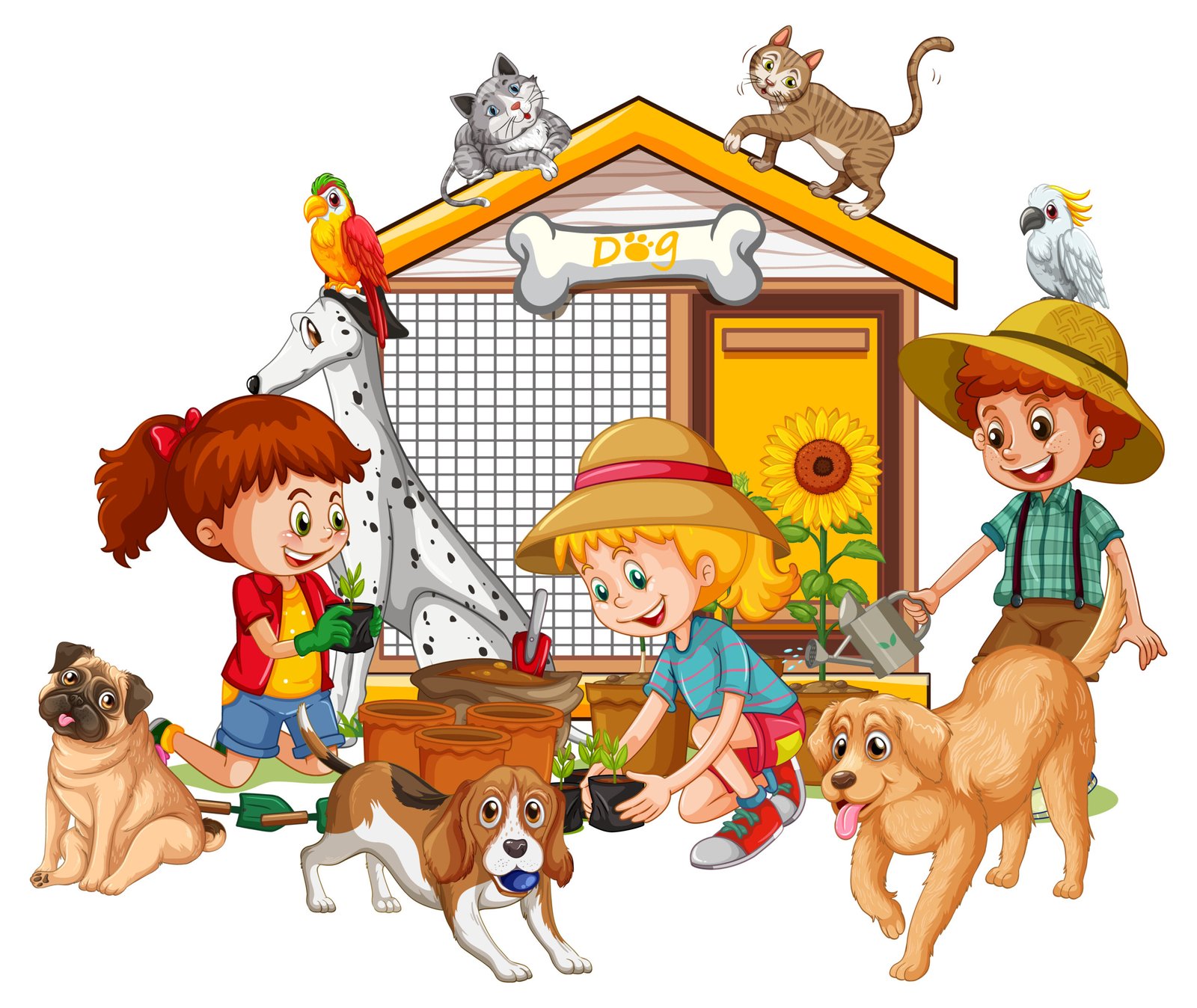
Introduction
Just like we live in homes built for comfort and safety, animals too have their own special spaces to live and grow. These homes are known as animal habitats, and each one is uniquely suited to the animal’s needs. From forest dens to deep ocean caves, every creature finds its perfect place in nature.
Understanding animals home is not only fun but also essential in helping children learn about the environment, biology, and compassion towards all living beings.
Why It’s Important to Learn About Animal Homes
Learning about animals and where they live helps children make meaningful connections with the world around them. It builds observational skills and scientific thinking—two traits encouraged in progressive learning environments. No wonder it’s emphasized in the Benefits of Modern Education, especially at the foundational level.
Animals and Their Homes: A Handy Table
Here are 20 animals and the names of the homes they live in:
Animal | Home | Habitat Type |
Lion | Den | Forest/Grassland |
Rabbit | Burrow | Meadow/Underground |
Bird | Nest | Tree/Bush |
Dog | Kennel | Domestic |
Cat | Cushion/House | Domestic |
Cow | Shed | Farm |
Horse | Stable | Farm |
Elephant | Forest | Jungle |
Snake | Hole | Desert/Jungle |
Fish | Water body | Rivers/Lakes/Oceans |
Bear | Cave | Mountains/Forests |
Ant | Anthill | Soil |
Spider | Web | Forests/Corners |
Penguin | Ice Nest/Burrow | Polar Region |
Duck | Nest | Wetlands |
Crocodile | Riverbank Nest | Swamps/Rivers |
Bat | Caves | Dark Places |
Bee | Hive | Trees/Boxes |
Fox | Den | Forests |
Camel | Desert Shelter | Desert |
These examples show the diversity of animal shelters and how they align with environmental conditions.
How Do Homes Help Animals?
Each habitat provides what the animal needs: safety, warmth, food, and shelter from harsh weather or predators. A rabbit’s burrow protects it underground, while a lion’s den offers seclusion to raise its young.
When children understand these connections, they not only learn biology but also build awareness about environmental balance. Practicing this kind of focused learning builds excellent academic habits, as seen through techniques like the Art of Note-taking.
Wild vs Domestic Animals and Their Homes
Let’s look at the difference:
- Wild animals: Lions, elephants, and foxes live in natural environments like jungles, caves, and dens.
- Domestic animals: Dogs, cats, and cows live near humans in kennels, homes, and sheds.
Schools that follow a balanced curriculum encourage real-world learning. This is evident in institutions like the best CBSE schools in Bangalore, where students often explore such themes through visual charts, flashcards, and creative activities.
Fun Activity: Match the Animal to Its Home
Use a mix of visuals and words. For example:
Cards – One side has animals like spider, crocodile, bat, and the other has homes like web, riverbank nest, cave.
Task – Match them correctly. This reinforces memory and observation.
Activities like these are supported by reading-based learning, which shows how the Importance of Reading enhances both comprehension and curiosity in children.
Fun Facts About Animal Homes
- Weaver birds are known for intricately woven hanging nests.
- Beavers construct homes called lodges and build dams to manage water flow.
- Ants and termites create underground cities with complex tunnels.
- Hermit crabs use discarded shells and switch as they grow.
To introduce kids to such wonders of nature, outdoor-based learning plays a big role. No wonder nature learning is a priority in the best CBSE schools in Sarjapur Road, where outdoor classrooms and field trips are common.
Conclusion
Learning about animals home brings children closer to nature, helping them understand survival, behavior, and environmental adaptation. Whether it’s the spider spinning its web or the elephant roaming through the forest, each creature has a place it calls home.
By engaging with this topic through stories, visuals, hands-on activities, and school projects, children not only become better learners but more aware human beings. Let their curiosity guide them as they explore the wild and wonderful world of animals.
FAQs
Q1. What is a habitat?
A habitat is the natural environment where an animal lives, finds food, and raises its young.
Q2. Why do animals live in different types of homes?
Each animal has different needs—some need warmth, others need to hide from predators. Their homes match these needs.
Q3. How can children learn about animals and their homes?
Through books, videos, interactive games, school activities, and field trips.
Q4. What’s the difference between wild and domestic animals?
Wild animals live in nature, while domestic animals live with humans.
Q5. Why should children learn about animals’ homes?
It builds knowledge, empathy, environmental awareness, and is part of early science education.
